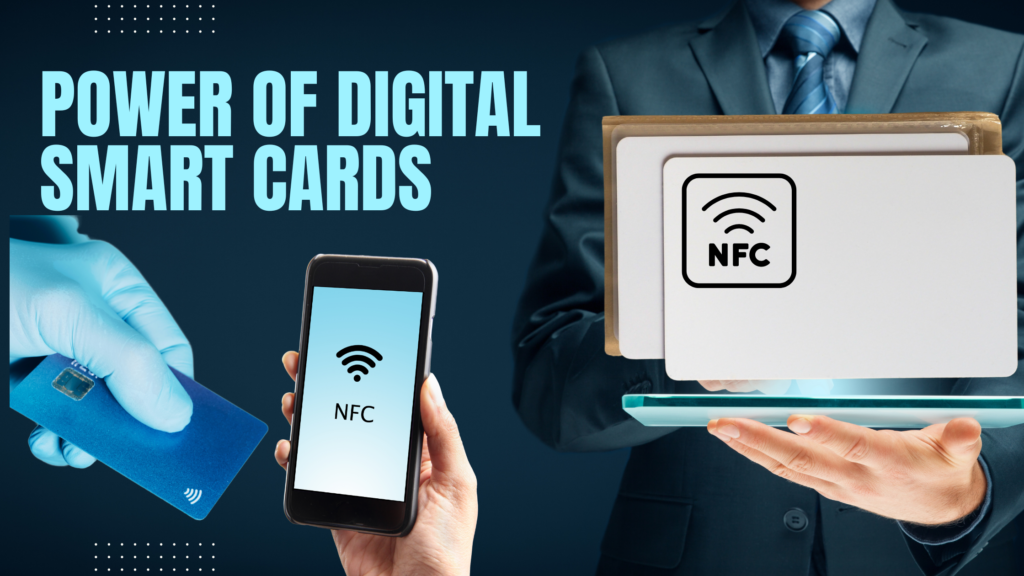Unleashing the Power of Digital Smart Cards: Revolutionizing Access Control Systems

In today’s rapidly evolving technological landscape, digital smart cards have emerged as a revolutionary solution, transforming traditional access control systems. With their sophisticated capabilities and advanced security features, digital smart cards are reshaping the way organizations manage and safeguard their premises, assets, and sensitive information. In this comprehensive guide, we delve deep into the realm of Unleashing the Power of Digital Smart Cards: Revolutionizing Access Control Systems, exploring their functionalities, benefits, and the pivotal role they play in enhancing security protocols across various industries.
Understanding Digital Smart Cards
What are Digital Smart Cards?
Digital smart cards, also known as smart chip cards or intelligent cards, are portable devices embedded with an integrated circuit chip. These cards leverage microprocessor technology to store, process, and transmit data securely. Unlike conventional magnetic stripe cards, digital smart cards offer enhanced security features such as encryption, authentication, and tamper resistance, making them ideal for applications requiring stringent access control measures.
Types of Digital Smart Cards
Contact Smart Cards
Contact smart cards require physical contact with a card reader to facilitate communication between the card and the reader. These cards feature exposed contact pads, which connect with corresponding contacts on the card reader, enabling data transfer and authentication processes.
Contactless Smart Cards
Contrary to contact smart cards, contactless smart cards utilize radio frequency identification (RFID) or near-field communication (NFC) technology to enable wireless communication between the card and the reader. On the other hand, With no physical contact required, contactless smart cards offer greater convenience and durability, minimizing wear and tear associated with frequent use.
Applications of Digital Smart Cards
Digital smart cards find extensive applications across various sectors, revolutionizing access control and identity management systems:
Access Control Systems
In corporate environments, digital smart cards are employed to regulate access to premises, sensitive areas, and confidential information. Nevertheless, By implementing digital smart card-based access control systems, organizations can enhance security, mitigate risks, and streamline authentication processes for employees, visitors, and contractors.
Payment Solutions
The integration of digital smart cards into payment solutions has revolutionized the way consumers conduct transactions. However, With features such as tokenization and dynamic authentication, smart card-based payment methods offer robust security measures, protecting against fraud and unauthorized access to financial data.
Government Identification
Governments worldwide are adopting digital smart cards for national identification programs, driver’s licenses, and e-passports. Additionally, These secure credentials enable efficient identity verification, border control, and authentication of citizens’ personal information, bolstering national security and combating identity theft and forgery.
Advantages of Digital Smart Cards
Enhanced Security
Digital smart cards employ advanced encryption algorithms and authentication mechanisms to safeguard sensitive data and prevent unauthorized access. Furthermore, With built-in security features such as biometric authentication, PIN protection, and secure key storage, smart cards offer multi-layered defense against identity theft, data breaches, and cyberattacks.
Convenience and Versatility
Accordingly, The versatility of digital smart cards extends beyond access control, encompassing a wide range of applications such as public transportation, healthcare, and loyalty programs. Their compact form factor and interoperability with various systems make them an ideal solution for modernizing processes and enhancing user experience across diverse industries.
Cost-Efficiency
Therefore, Despite initial implementation costs, digital smart cards offer long-term cost savings by reducing operational overheads associated with manual identity verification, credential issuance, and data management.
Because, Their durability and tamper-resistant design minimize the need for card replacement and mitigate the risks of fraud and counterfeit activities, resulting in significant financial.
Compliance and Regulation
In addition, Digital smart cards adhere to stringent industry standards and regulatory requirements, ensuring compliance with data protection.
By adopting smart card technology, businesses can demonstrate their commitment to safeguarding customer data, fostering trust.
Future Trends and Innovations
As technology continues to evolve, the future of digital smart cards holds immense potential for innovation and disruption.
Moreover, Emerging trends such as biometric authentication integration, and Internet of Things (IoT) connectivity are poised to further enhance the capabilities. In conclusion, Unleashing the Power of Digital Smart Cards: Revolutionizing Access Control Systems represent a paradigm shift in access.
Conversely, As organizations embrace digital transformation initiatives, smart card technology will play a pivotal role in safeguarding assets, protecting sensitive information.

